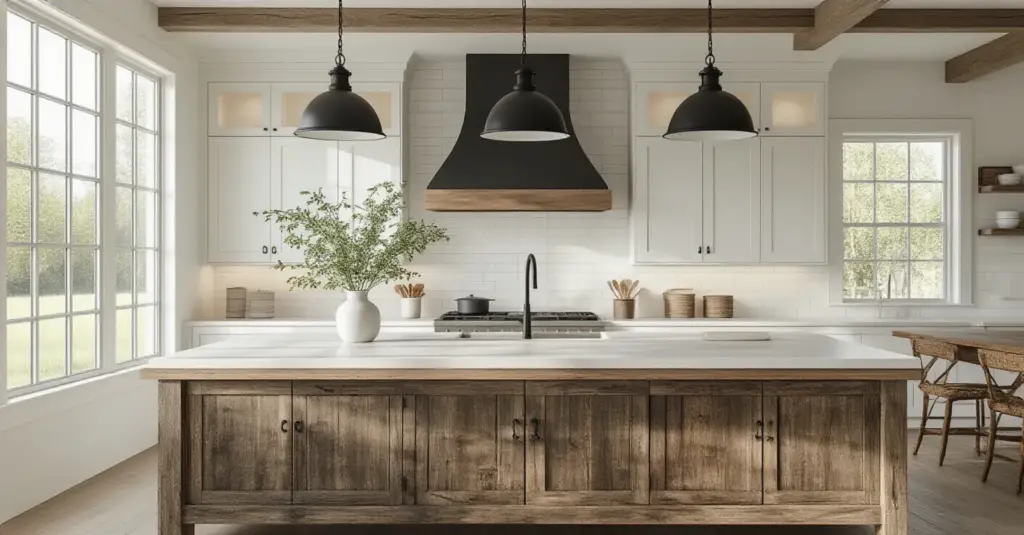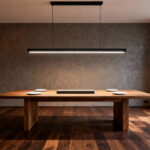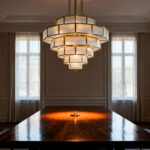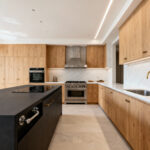Can we just be honest for a second about farmhouse kitchens? I see so many on Pinterest that look like sterile, all-white showrooms where no one actually lives, let alone works. They’re filled with decorative rolling pins and signs that say “EAT,” and it all feels a bit… staged. The original farmhouse kitchen wasn’t a design trend; it was the hardworking, functional command center of a home. It was where work got done.
And for so many of us working from home, that’s exactly what our kitchens have become again. It’s where you take a five-minute break between Zoom calls, where you make lunch while answering emails, and where you try to decompress at the end of the day. A truly successful farmhouse kitchen today isn’t about how much shiplap you can cram into a room; it’s about creating a space that is comfortable, productive, and reduces stress. It’s an investment in your well-being. Here’s how to get the look while creating a space that actually works.
Laying the Foundations of Your Farmhouse Kitchen (Part 1)
Before you even think about antique signs or mason jars, you have to get the foundation right. This is the stuff that isn’t glamorous but makes all the difference in whether your kitchen is a joy to be in or a source of constant frustration. Getting these big-picture items right sets the stage for a space that is both timelessly stylish and incredibly functional for your daily life.
1. Define Your Specific Farmhouse Style (Modern, Rustic, Industrial)
People get paralyzed here, trying to follow a dozen different inspiration photos. Here’s the shortcut: stop trying to do everything. Just pick one dominant style as your base—say, 80% of your choices—and use another as a 20% accent. Are you mostly clean and bright (Modern)? Then your accent might be some reclaimed wood (Rustic). Or do you like metal and exposed elements (Industrial)? Then maybe your accent is the warmth of Shaker cabinets (Modern).
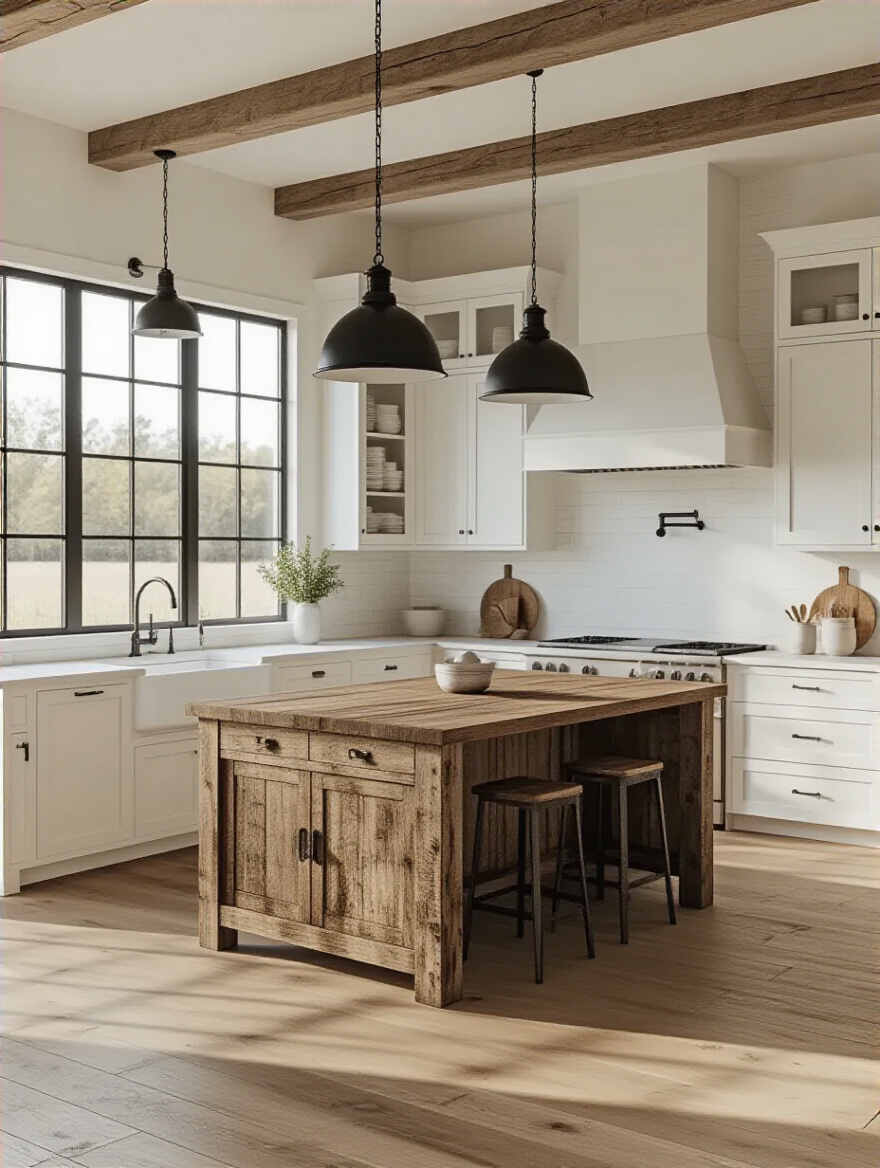
The noise here is thinking you have to be a purist. You don’t. The mistake is trying to be 50% one style and 50% another, which just ends up looking chaotic and unintentional. I had a client who loved both rustic beams and sleek industrial lighting. We made the rustic wood island the clear star of the show and used simple, matte black industrial pendants as a supporting accent. The result was cohesive, not confusing. It gives the space personality without creating visual clutter, which is a killer for focus.
With that strong foundation established, we can build upon it with a color palette that supports both the aesthetic and your mental state.
2. Master the Farmhouse Color Palette with Warm Neutrals and Muted Tones
The all-white farmhouse kitchen you see everywhere can feel cold and clinical. The real goal isn’t just “white,” it’s “warmth.” A warm neutral—think creamy off-whites, soft greiges, or even a muted sage green—creates a calming visual backdrop. From a productivity standpoint, this is huge. Your brain isn’t fighting a dozen competing colors, so it reduces your cognitive load and makes the space feel more serene.
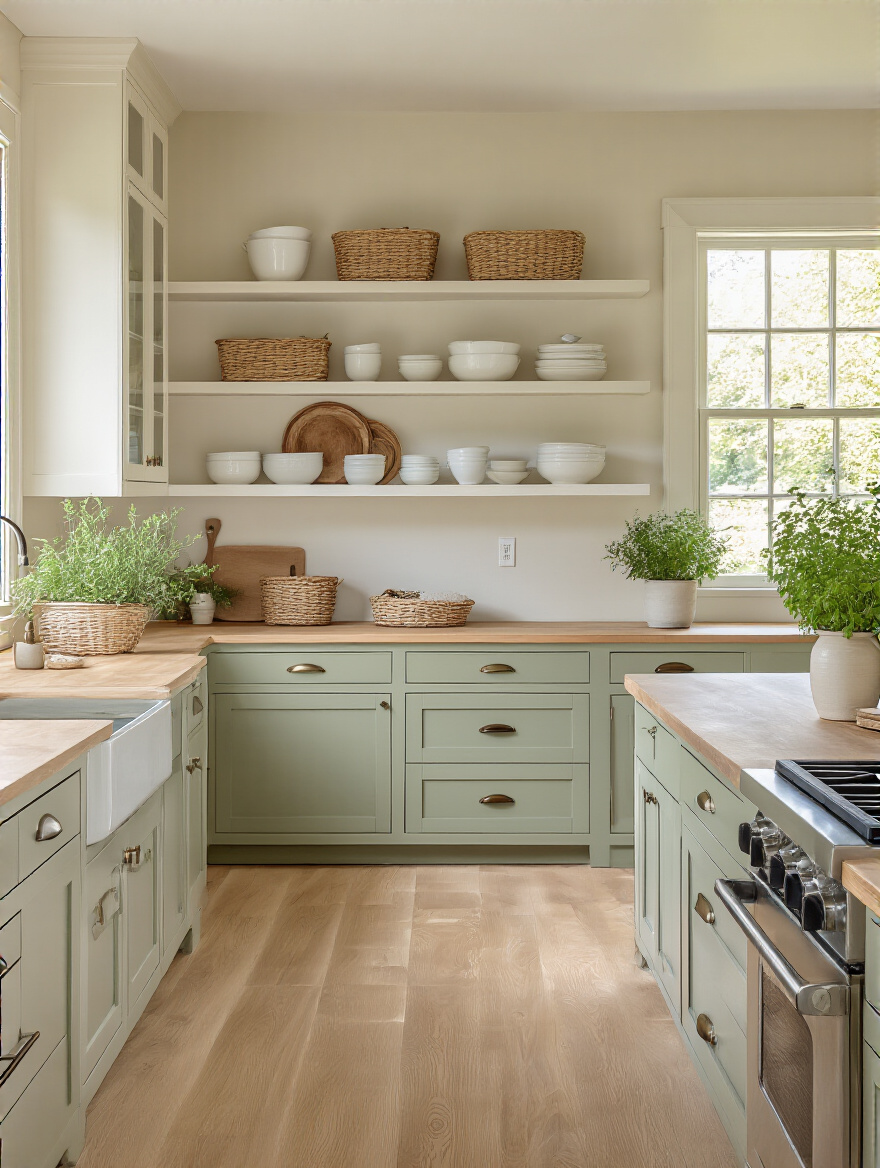
Everyone says to just paint it white, but that’s lazy advice. Which white? A stark, blue-toned white under harsh LED lights will feel like a laboratory. The shortcut I give all my clients is to get samples of Benjamin Moore’s ‘Swiss Coffee’ or Sherwin-Williams’ ‘Accessible Beige.’ Paint a big swatch on the wall and look at it in the morning, noon, and night. These colors are complex enough to feel warm and inviting, providing that calm canvas your busy life needs.
Now that the walls are a source of calm rather than chaos, let’s talk about what’s under your feet.
3. Choose Durable and Authentic Flooring Options Like Hardwood or Checkerboard Tile
Your floor is arguably the most hardworking surface in your kitchen. Authenticity is great, but as someone who spends a lot of time on their feet, I can tell you that ergonomics matter more. Hardwood looks beautiful and is a classic choice, but it can be unforgiving on your back and knees if you’re standing for long periods. Checkerboard tile is incredibly durable and easy to clean, but it can feel cold and hard.
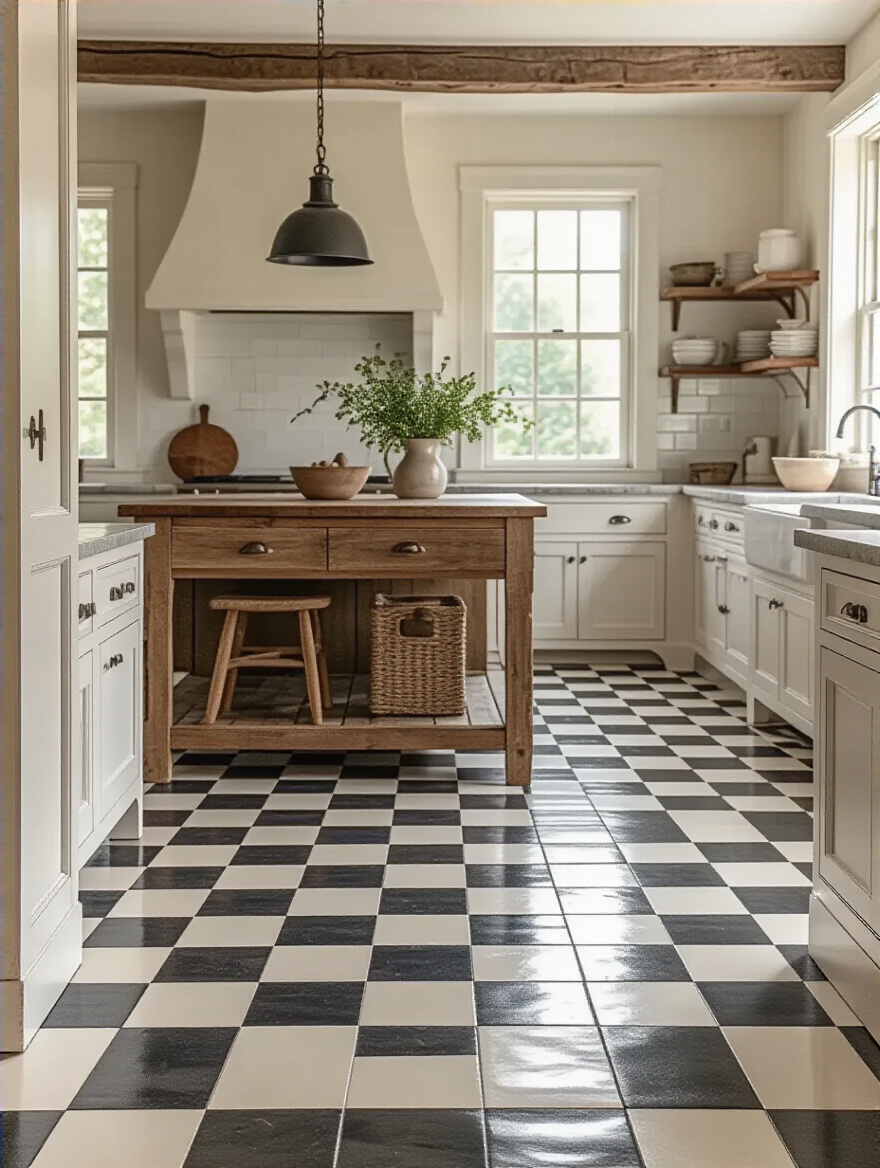
Here’s what actually matters: create a “work zone” that prioritizes your comfort. Regardless of whether you choose wood or tile, invest in a high-quality anti-fatigue mat to place in front of the sink and your main prep area. It’s a small investment that will pay dividends for your physical well-being. I once worked in a corporate office that installed gorgeous concrete floors—everyone was miserable and unproductive until they gave us all mats. Don’t make the same mistake in your home’s command center.
Comfort and durability on the floor are key, and that same principle applies to the most-used items in the room: your cabinets.
4. Select Iconic Cabinetry Styles: Shaker or Beadboard for Timeless Appeal
Let me give you the simplest advice you’ll ever get on kitchen cabinets: just get Shaker style. It is the blue jeans of kitchen design. It works with literally any hardware, any countertop, and any farmhouse sub-style—modern, rustic, you name it. Its clean lines don’t create a lot of visual noise, which keeps the space feeling calm and organized. Beadboard is beautiful but it’s a much more specific, cottage-y look, and those grooves can be a pain to clean.
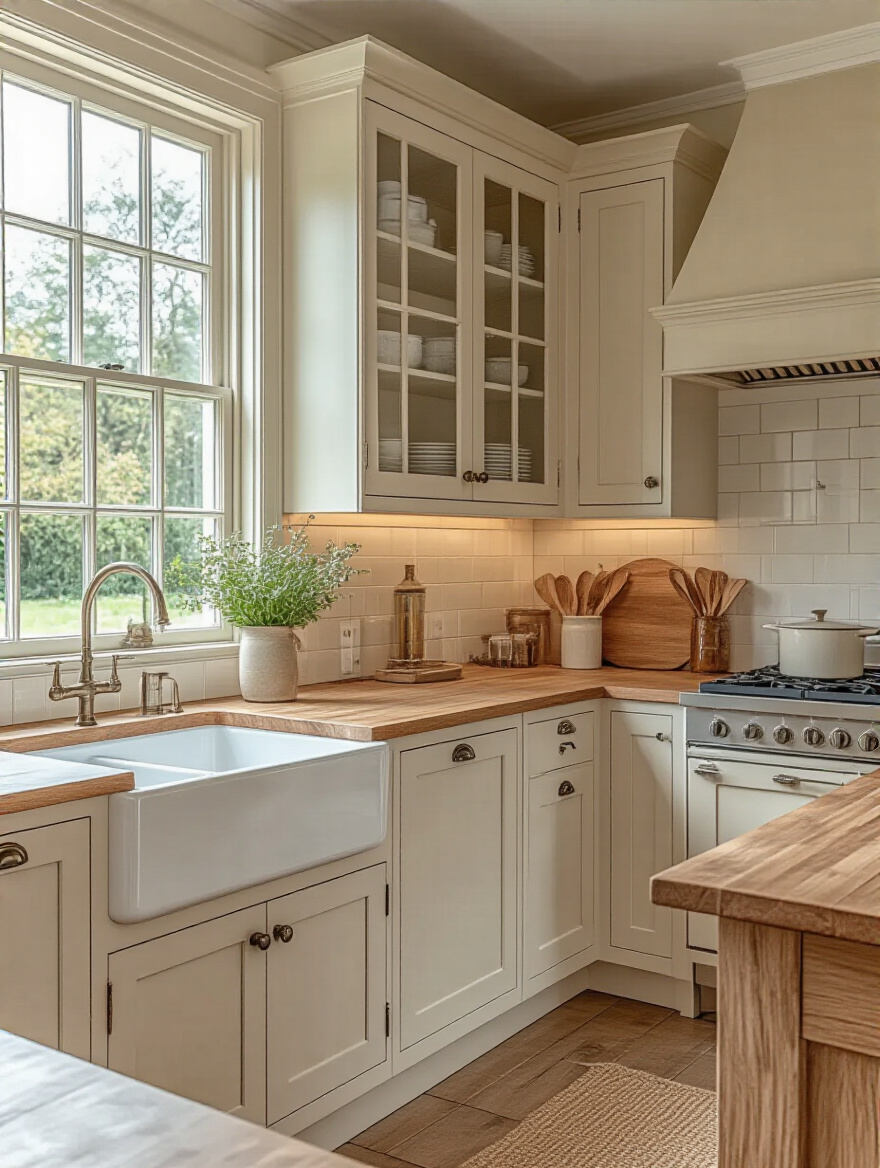
The BS everyone talks about here is the finish and color trends. The thing that actually matters is the construction. Opt for solid wood frames and plywood boxes over particleboard every single time. Good quality, soft-close hardware is a non-negotiable. Why? Because the daily experience of using cabinets that don’t slam shut and drawers that glide smoothly is a tiny, repeated moment of stress reduction. That’s the real luxury and the smartest investment you can make.
Laying the Foundations of Your Farmhouse Kitchen (Part 2)
We’ve covered the big architectural elements, but now we’re getting into the high-contact fixtures. These are the pieces you’ll touch and use dozens of times a day. Their functionality—or lack thereof—will have a direct impact on your daily workflow and overall sense of ease in the kitchen.
5. Integrate a Classic Apron-Front Sink for Form and Unmatched Functionality
Everyone loves an apron-front sink because it’s the visual icon of a farmhouse kitchen. But let me tell you the real reason it’s a brilliant design, especially for people who work from home. Because the front wall is eliminated, you can stand about two inches closer to the sink. This slight change in posture means you don’t have to hunch over as much, which drastically reduces back strain when you’re washing dishes.
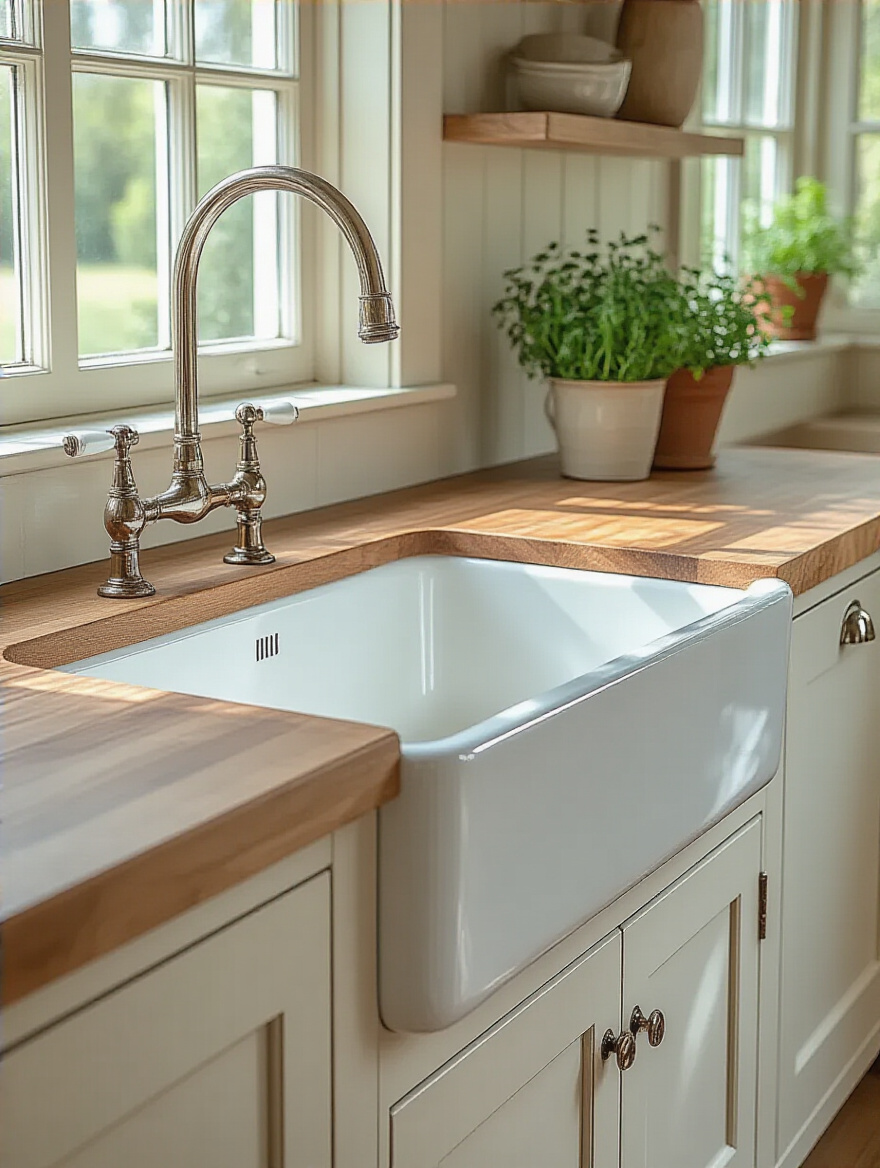
The other huge productivity win? These sinks are massive. You can hide an entire day’s worth of coffee mugs and lunch plates in there before a last-minute video call. It’s an instant decluttering tool. I once had a client who called her apron-front sink her “three-minute tidy” solution. When the doorbell rang unexpectedly, everything just went into the sink, and the kitchen looked clean. It’s a small thing, but those little bits of saved stress add up.
With a sink this functional, you need a countertop that can keep up.
6. Opt for Rustic or Natural Countertop Materials Such As Butcher Block or Soapstone
This is where I’m going to save you from a huge mistake. Butcher block looks incredible in photos, but it is a high-maintenance relationship you might not have time for. It stains easily, needs regular oiling, and can get damaged by water. Soapstone is gorgeous and develops a beautiful patina, but it’s soft and will scratch and chip. If you’re a busy professional, you need a countertop that you don’t have to baby.
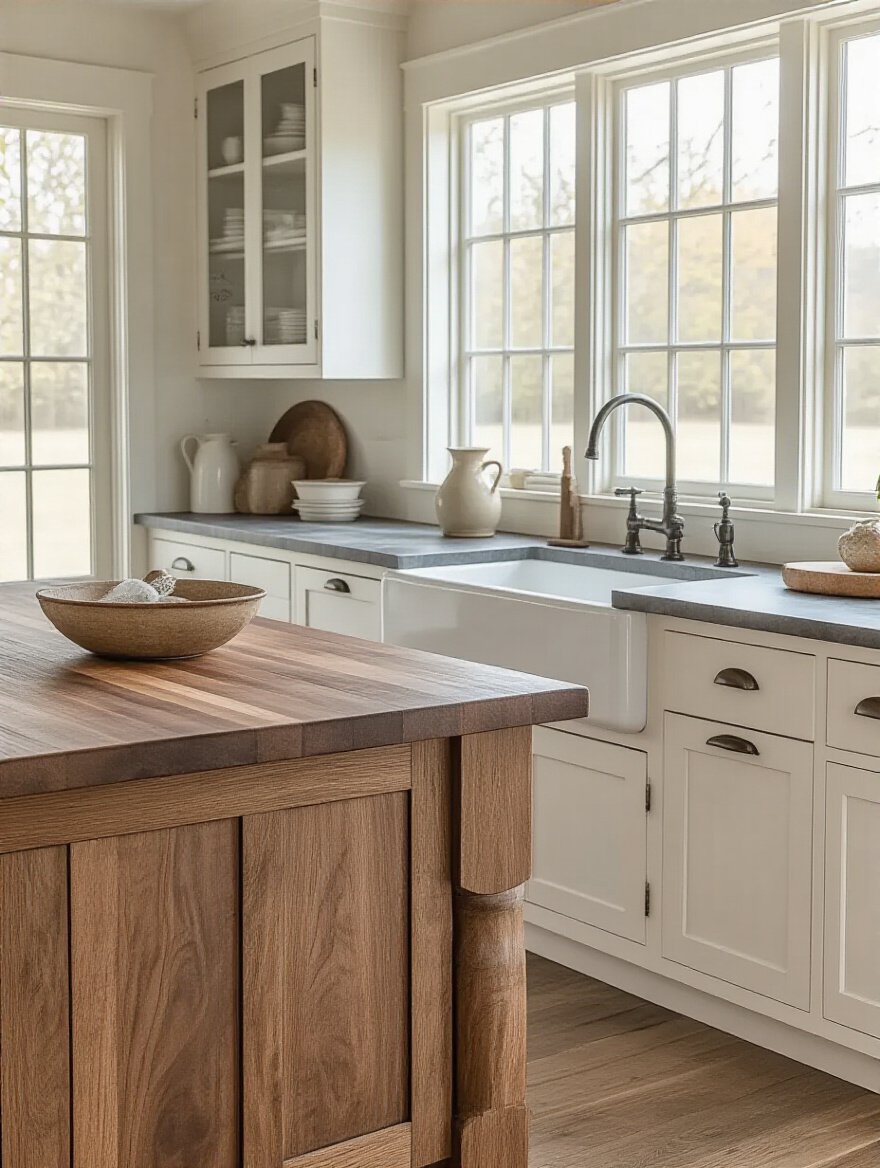
The best-kept secret for achieving the farmhouse look without the maintenance headache is honed quartz. Manufacturers now make quartz that beautifully mimics the look of soapstone or even light-grained wood, but it’s virtually indestructible. You can spill wine or lemon juice on it, and it won’t stain. You can put a hot pan on it (with a trivet, please!), and it won’t scorch. It gives you the warm, matte finish of a natural material with the resilience modern life demands. Don’t let design purity get in the way of practicality.
Essential Fixtures and Architectural Details (Part 1)
Now we get to the elements that really define the character of the space. These aren’t just background players; they are the architectural details and fixtures that create the mood, provide essential function, and make the room feel complete and intentional.
7. Install Vintage-Inspired Lighting Fixtures Like Barn Pendants or Lanterns
Lighting is an area where people often under-invest, and it’s a huge mistake. Bad lighting doesn’t just look bad; it causes eye strain, headaches, and can tank your energy levels. Vintage-style pendants are perfect for a farmhouse kitchen not just for their look, but because they provide excellent downward-facing “task lighting” over an island or sink—exactly where you need it most.
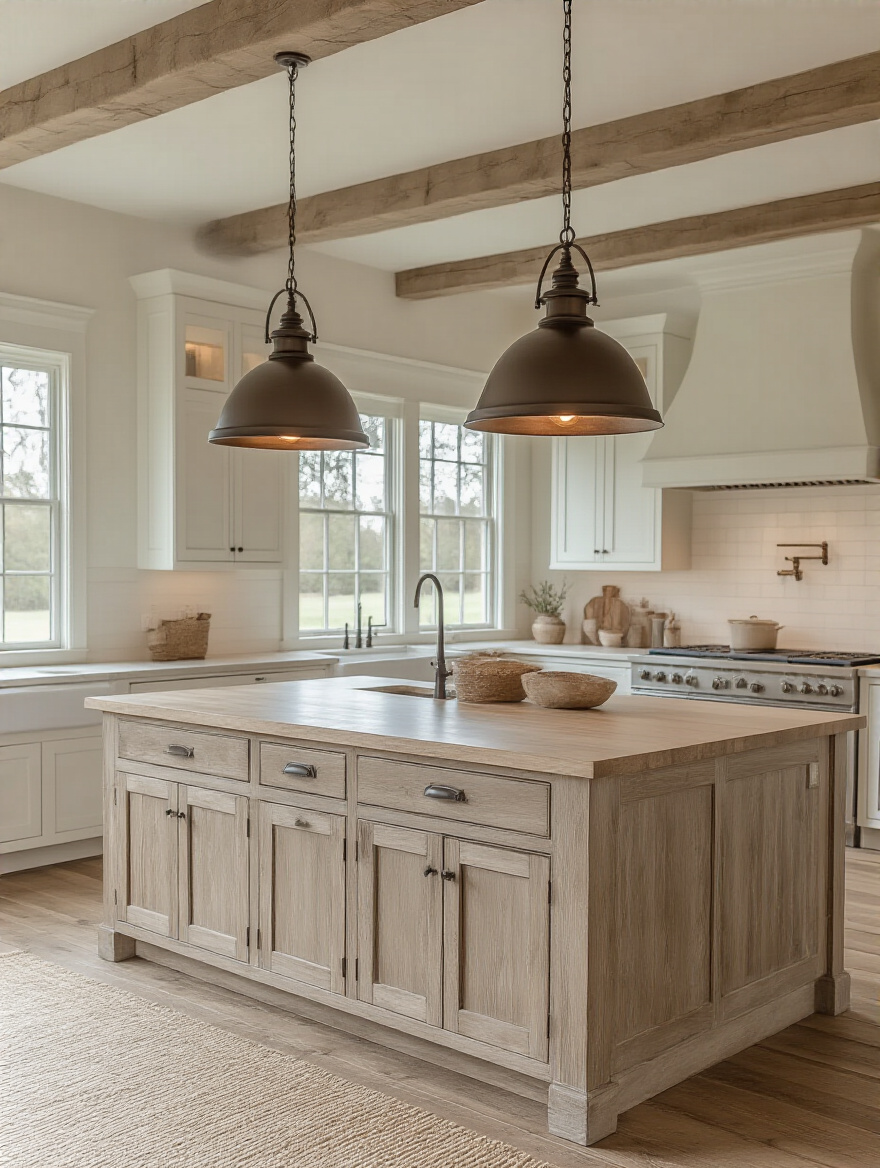
But here’s the game-changing tip that no one tells you: put everything on a dimmer. It’s the single most effective way to control the mood and function of the room. Bright light for focused work like chopping vegetables or reviewing documents, and soft, warm light for winding down with a glass of wine at the end of the day. This simple, inexpensive upgrade turns your lighting from a purely functional utility into a tool for managing your energy and well-being.
Proper lighting highlights the architectural details of your room, which brings us to the next point.
8. Incorporate Architectural Details Such as Shiplap Walls or Exposed Beams
Shiplap is the most overused and misunderstood element of farmhouse design. A little bit goes a long way. Using it on a single accent wall or as a backsplash can add texture and interest. But putting it on every wall will make your kitchen feel like the inside of a crate. Exposed beams are fantastic for adding warmth and drawing the eye upward, but they only really work if you have the ceiling height to support them.
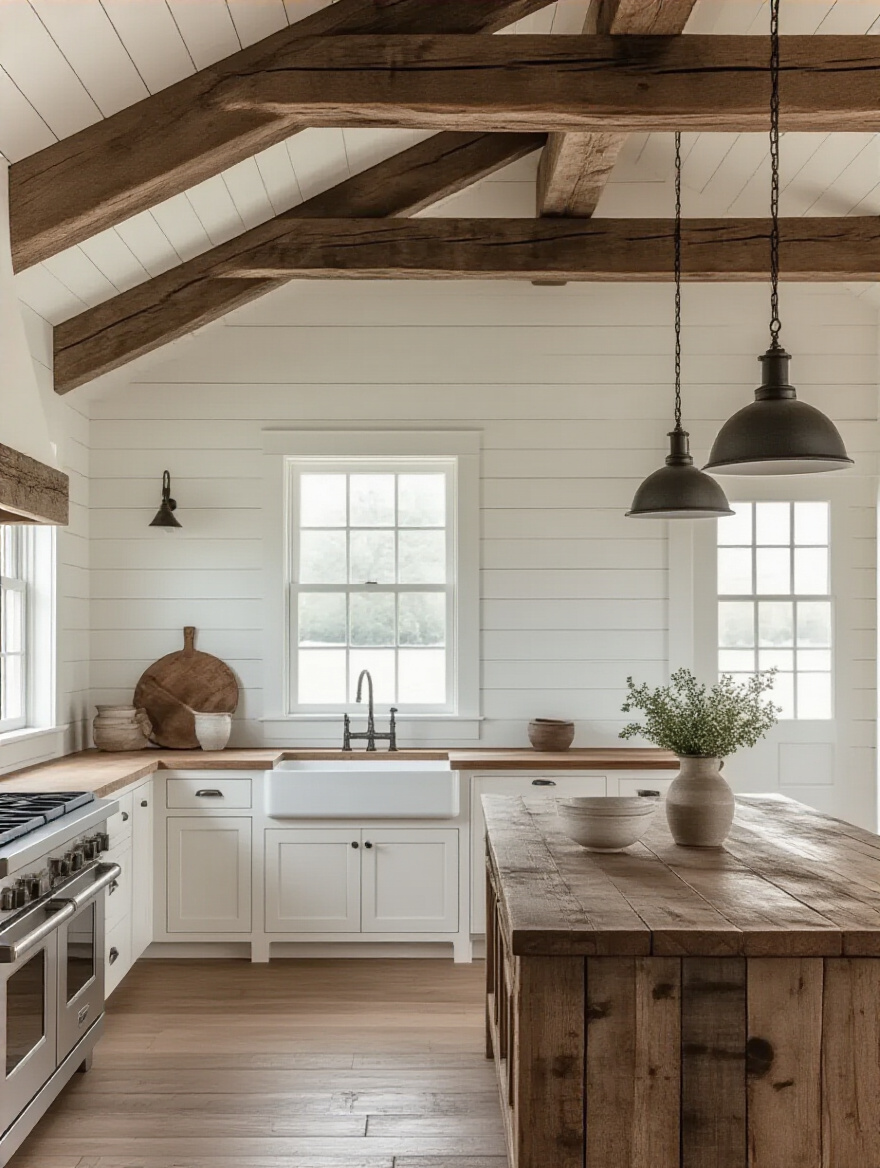
The real story here is about adding texture and a focal point, not just checking a box on a trend list. I once consulted on a kitchen that had low ceilings, making beams impossible. Instead, we installed simple vertical beadboard paneling on the lower half of the walls. It gave the room that same sense of history and texture without visually lowering the ceiling, and it cost a fraction of what beams would have. The key is to choose an architectural detail that complements your space, not overwhelms it.
Now, let’s talk about the details you touch every day.
9. Select Hardware with Aged Finishes for an Authentic and Lived-In Touch
Hardware is the jewelry of your kitchen, and aged finishes like oil-rubbed bronze, antique brass, or matte black are perfect for grounding a farmhouse look. They have a built-in patina that makes them feel like they’ve been there forever, which adds a layer of authenticity. More importantly, from a practical standpoint, these finishes are incredibly forgiving. They don’t show fingerprints or smudges like polished chrome or nickel, meaning less time spent wiping them down.
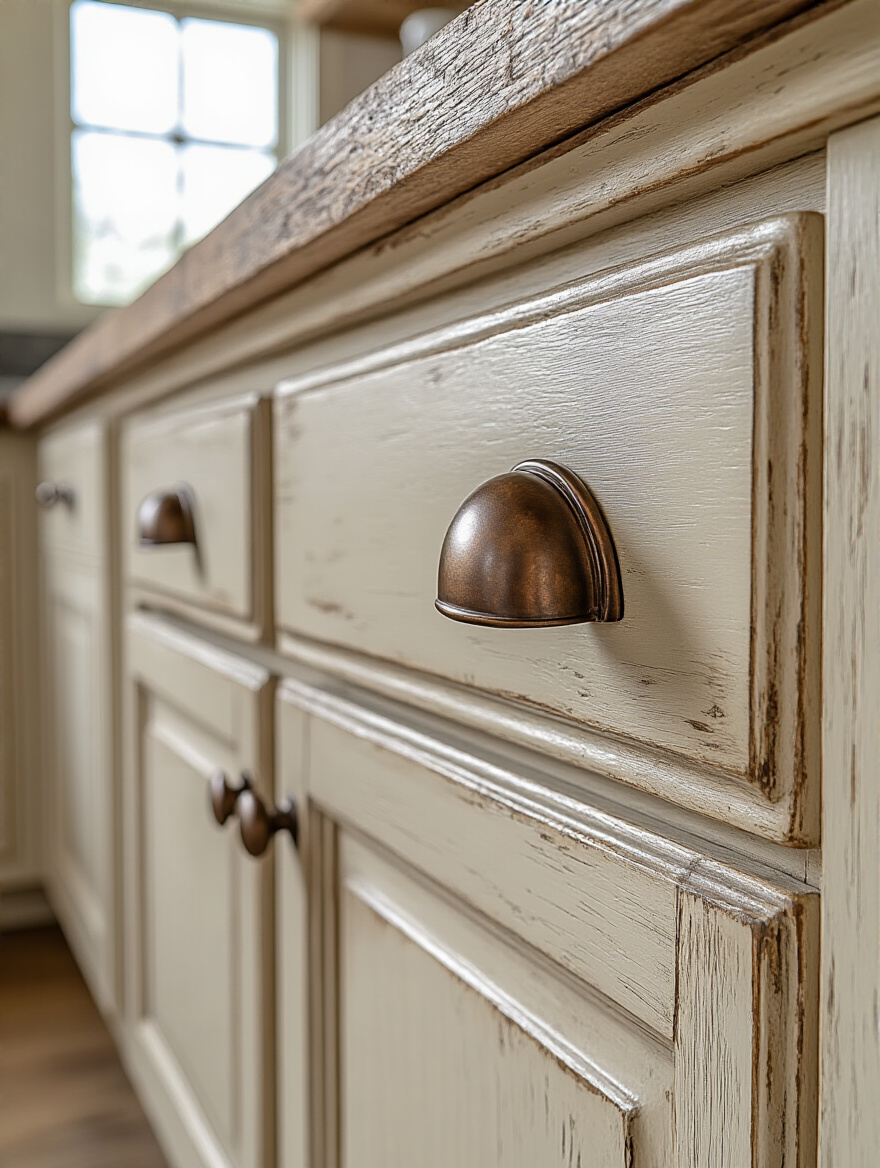
Here’s the shortcut: buy your hardware from a place with a good return policy. Order one or two samples of the styles you like and hold them up against your actual cabinet doors in your kitchen’s light. I’ve seen clients order 40 beautiful brass pulls online only to realize the brass has a weird green undertone that clashes with their paint. Don’t make an expensive mistake—always test a sample first.
From the small details, we now move to the biggest statement piece in most farmhouse kitchens.
10. Design an Oversized Island as a Central Gathering and Workspace Hub
The oversized island is the modern equivalent of the traditional farmhouse table. It’s where everything happens: meal prep, casual dinners, kids’ homework, and—let’s be real—your laptop. This is the hardest working piece of furniture in your home, so its design has to be ruthlessly functional. You need ample clear counter space, durable materials, and integrated power outlets.
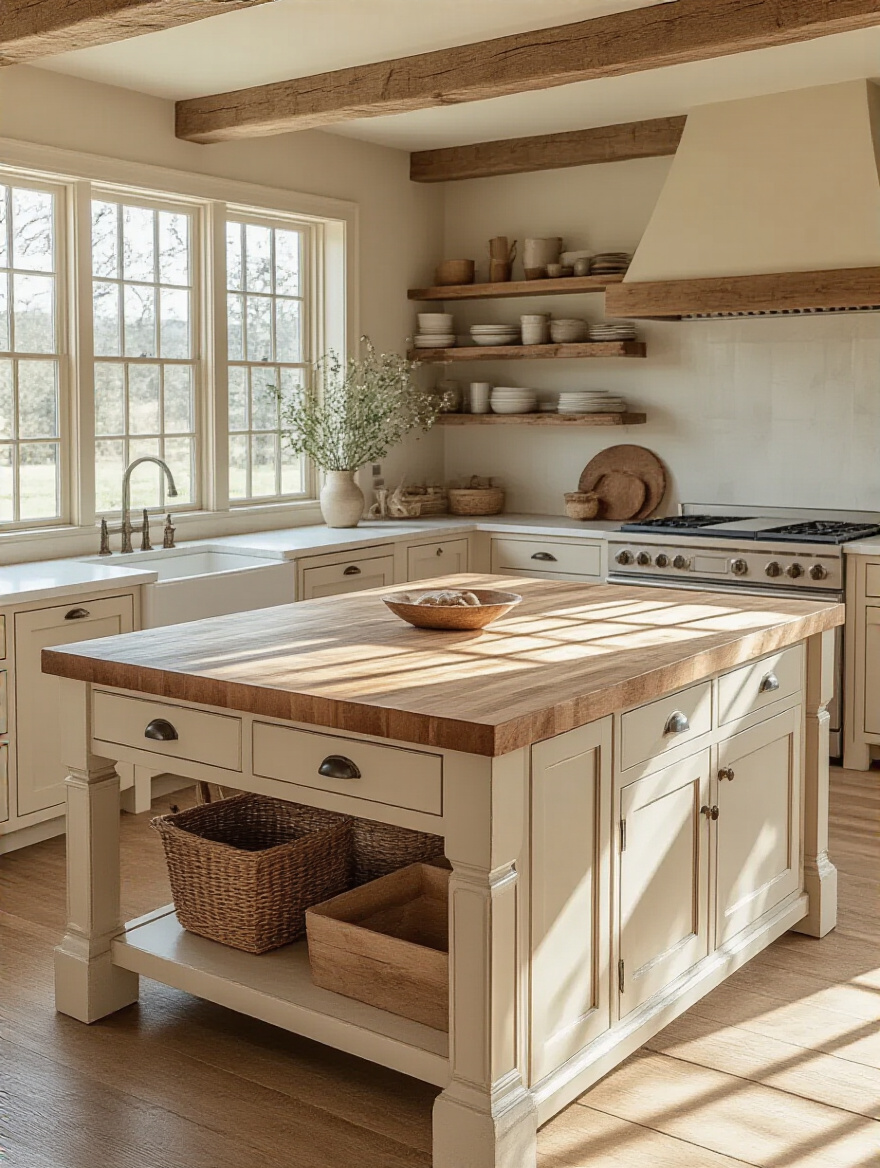
I used to think integrated outlets were a luxury. Then I spent a week trying to work from a client’s island and constantly hunting for a free plug for my laptop and phone. It was maddening. Now, I consider discreetly placed pop-up or under-counter outlets a non-negotiable for any kitchen island. This simple addition transforms the island from just a prep space into a truly functional, flexible workspace that supports your entire day.
Essential Fixtures and Architectural Details (Part 2)
We’re moving past the main structures and into the finishing touches that really blend form and function. These are the choices that determine whether your kitchen looks like a catalog or feels like a real, curated, and highly efficient home.
11. Embrace open shelving to Display Charming Dishware and Cookbooks
Here’s a hard truth: open shelving is a trap for most people. Everyone says it makes a kitchen feel open and airy, but what they don’t tell you is that it requires constant curation and cleaning. Unless you are naturally a minimalist and have a complete set of matching, beautiful dishes, it will become a clutter magnet and a source of low-grade visual stress.
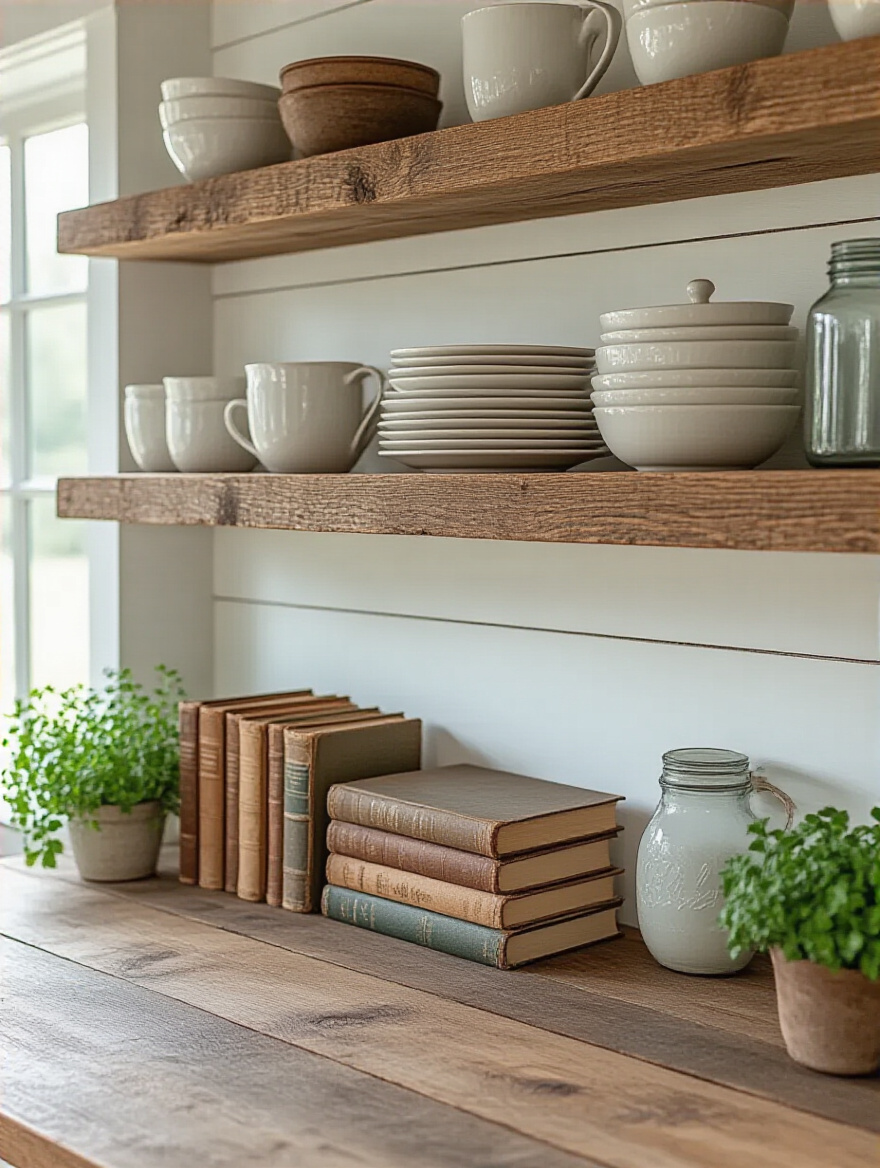
The shortcut here is to get the aesthetic without the full commitment. Instead of replacing all your upper cabinets, install just one or two long, sturdy floating shelves in a strategic spot. Use them to display your most beautiful and least-used items—a few nice cookbooks, a ceramic pitcher, a plant. For your everyday items, use cabinets with glass-front doors. You still get that lighter, more open feel, but the glass provides a physical barrier against dust and grease, making your life infinitely easier.
Whether hidden or on display, you still need storage, but let’s talk about streamlining what you do see.
12. Integrate Appliance Panels for a Seamless and Streamlined Look
Appliance panels—custom cabinet fronts for your dishwasher and refrigerator—are an amazing way to create a calm, uncluttered visual line in your kitchen. By hiding the big blocks of stainless steel, you make the appliances disappear, which allows the warmth of your cabinetry and other finishes to take center stage. This visual simplicity is incredibly calming and makes a kitchen feel less like a utility room and more like a living space.
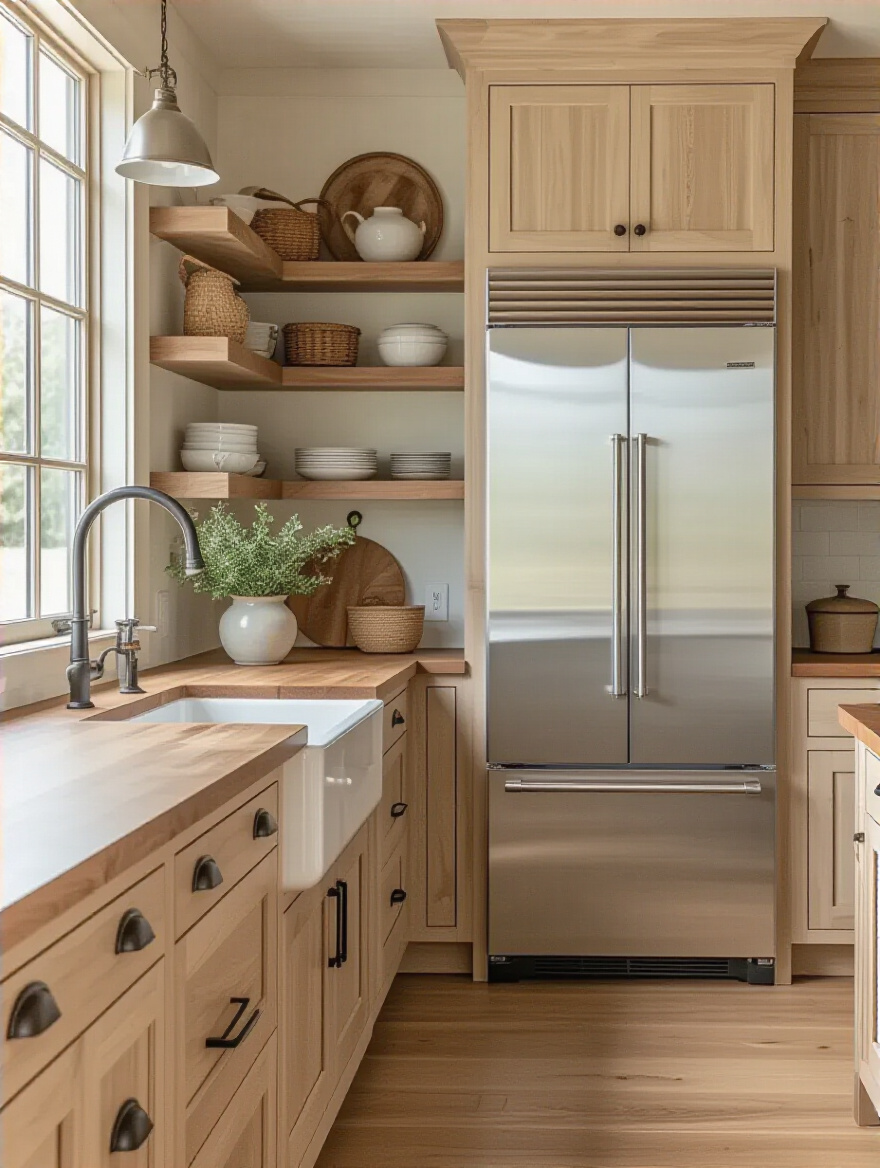
The “BS” here is that this is an incredibly expensive, custom-only feature. It’s definitely an investment, but many semi-custom cabinet lines and even IKEA offer panel-ready options that are far more accessible than they used to be. The key is to plan for it from the beginning. You have to buy “panel-ready” appliances, which are specifically designed for it. You can’t just slap a cabinet front on a regular dishwasher. It’s a detail that requires forethought but pays off massively in creating a serene, cohesive space.
Decorating and Personalizing Your Cozy Space (Part 1)
The foundation is built, the fixtures are in—now it’s time to breathe life into the space. This is where you transform the room from a well-designed kitchen into your kitchen. It’s all about adding layers of texture, warmth, and personality that make it feel like a truly comforting and inviting place to be.
13. Curate Charming Vintage and Antique Finds to Add Unique Character
The fastest way to make a new kitchen feel sterile is to buy all your decor from one big-box store. Vintage and antique finds are the secret weapon for adding soul and story to your space. You don’t need a lot. One or two meaningful pieces will have more impact than a dozen generic ones. Think about an old wooden cutting board with decades of knife marks, a stoneware crock for your utensils, or a vintage oil painting of a landscape.
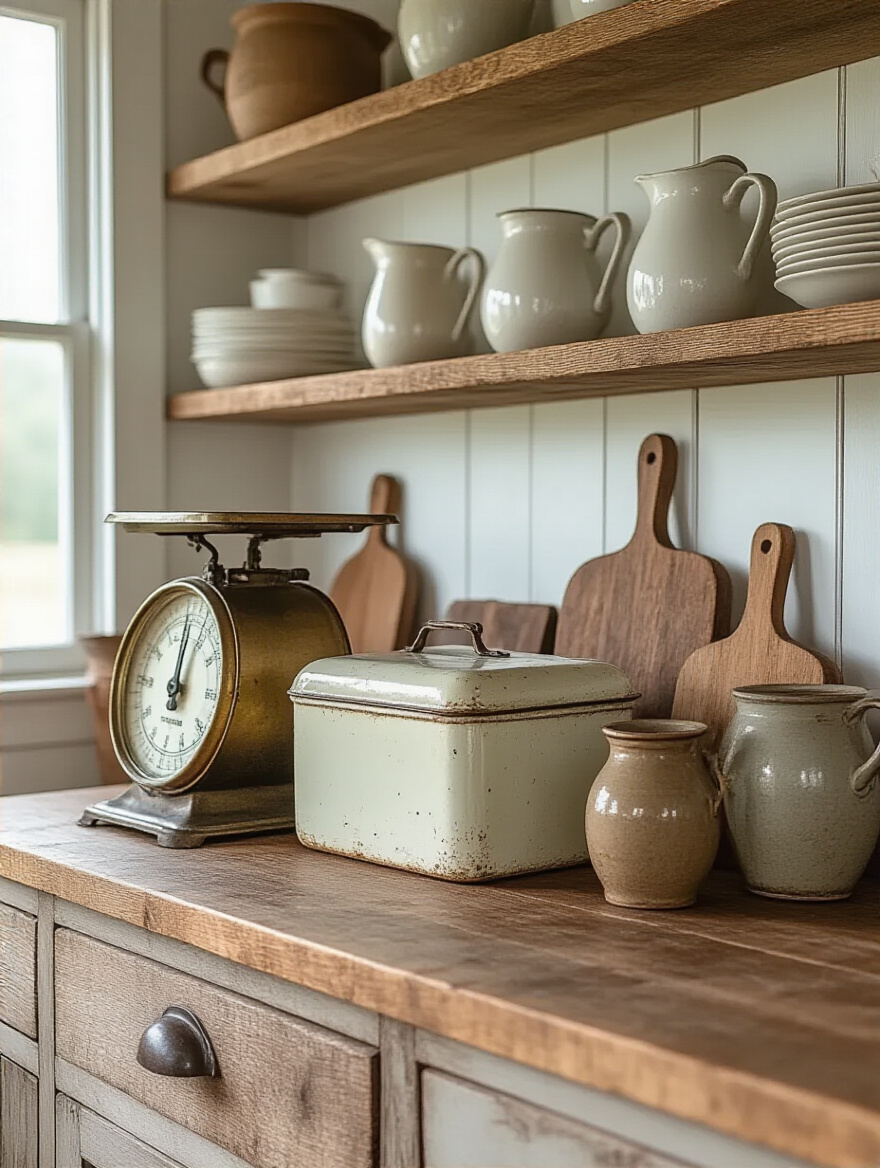
My biggest pet peeve is “faux vintage”—new items made to look old. They lack the genuine character that makes antique pieces so special. The shortcut is to think functionally. Look for items you can actually use. An antique scale can hold your fruit bowl. A set of vintage tins can store your tea bags. When decor also serves a purpose, it feels intentional and authentic, not like you’re just filling space.
These storied pieces add visual warmth, which can be amplified by adding literal warmth through textiles.
14. Use Natural Textiles and Materials for Comfort and Warmth (Linen, Cotton, Jute)
Hard surfaces are everywhere in a kitchen: stone countertops, wood cabinets, tile floors. Without textiles, the room can feel cold and unwelcoming, and sounds will echo harshly. Layering in natural fabrics like linen, cotton, and jute is the fastest way to add softness, absorb sound, and make the space feel cozy.
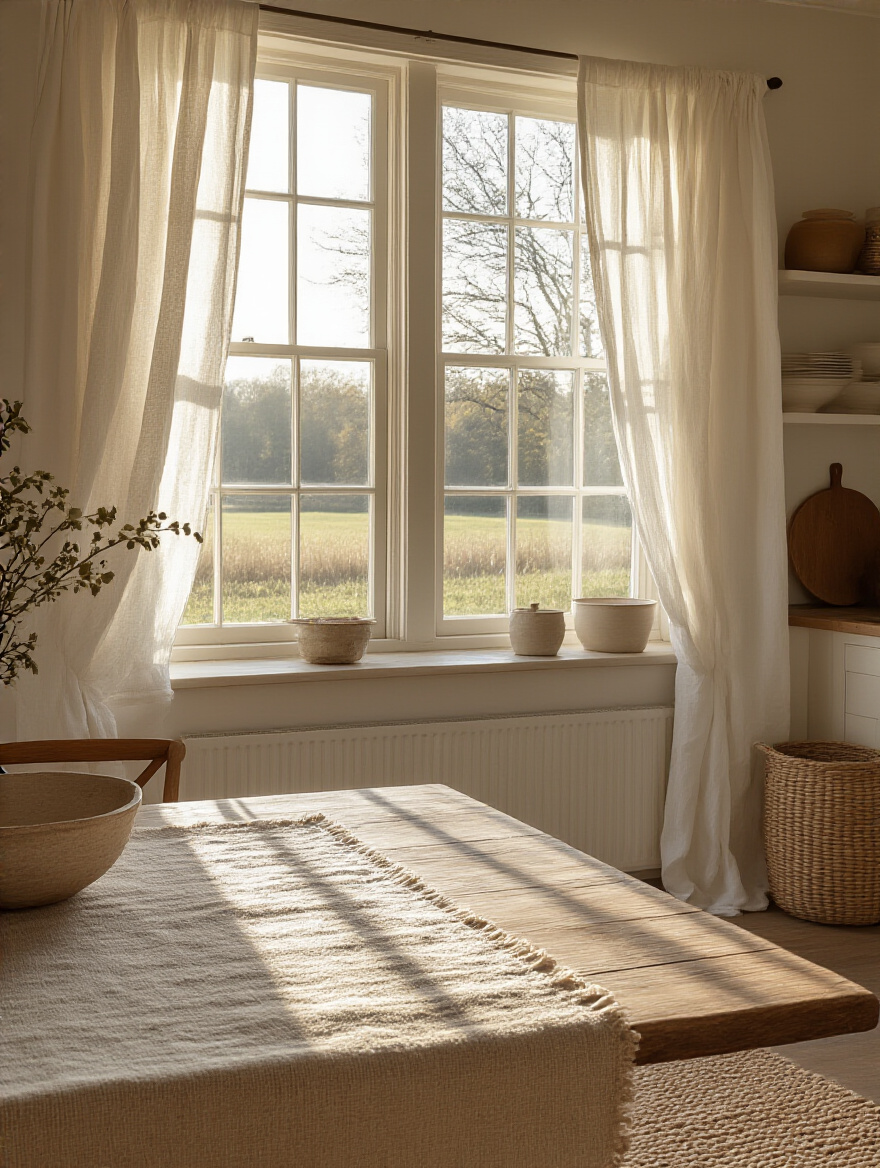
This is about more than just throwing a tea towel over the oven handle. Think about a durable, washable jute runner on the floor, simple linen cafe curtains on the window to soften the light, or comfortable cotton cushions on your breakfast nook seating. A client of mine with an open-concept living space said adding a thick wool runner to her kitchen galley was a game-changer; it defined the kitchen zone and dramatically cut down on the clatter of pots and pans echoing through her home.
From textiles that add comfort, let’s move to living things that add vitality.
15. Bring Life into the Kitchen with Potted Herbs, Fresh Greenery, or Floral Arrangements
A kitchen without any greenery feels dead. Plants literally breathe life into a space. They soften hard edges, add a pop of natural color, and have been proven to reduce stress and boost mood. In a farmhouse kitchen, this is non-negotiable. Potted herbs on a windowsill are the ultimate blend of form and function—they look great, smell amazing, and are right there when you need them for cooking.
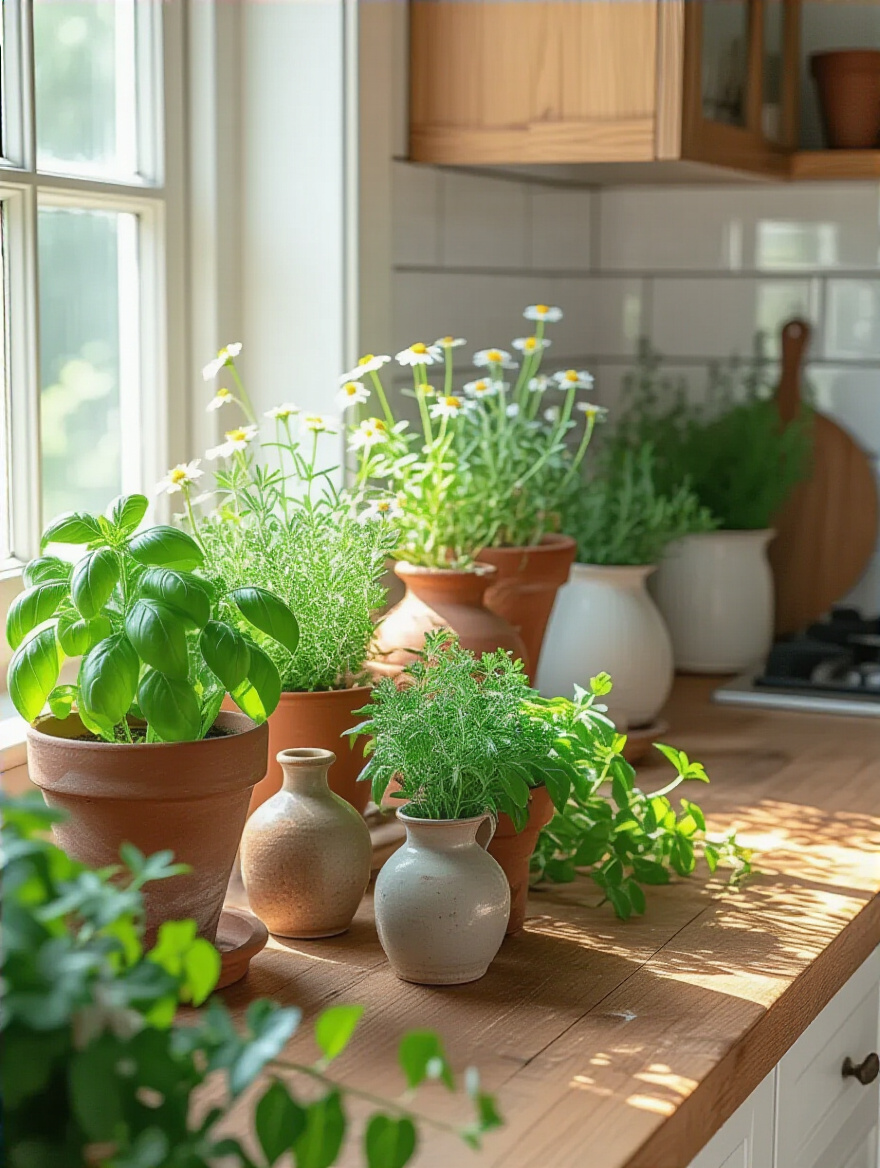
If you have a “black thumb,” don’t give up. The shortcut is to choose plants that thrive on neglect. A snake plant or a ZZ plant will tolerate low light and infrequent watering, and they still give you that lush, green effect. And don’t underestimate the power of a simple vase with a few fresh-cut branches from your yard. It’s an easy, free way to bring the outdoors in and instantly make the room feel more alive and connected to nature.
With all these elements, you need a comfortable place to sit and enjoy them.
16. Create a Cozy Breakfast Nook or Casual Dining Area for Intimate Meals
Not every kitchen has space for a dedicated breakfast nook, but creating a small, comfortable spot for one or two people to sit is crucial. It gives you a place to have your morning coffee that isn’t a formal dining table or a chaotic island. It’s a signal to your brain to slow down for a minute, and having that little ritual is essential for starting your day right, especially when you work from home.
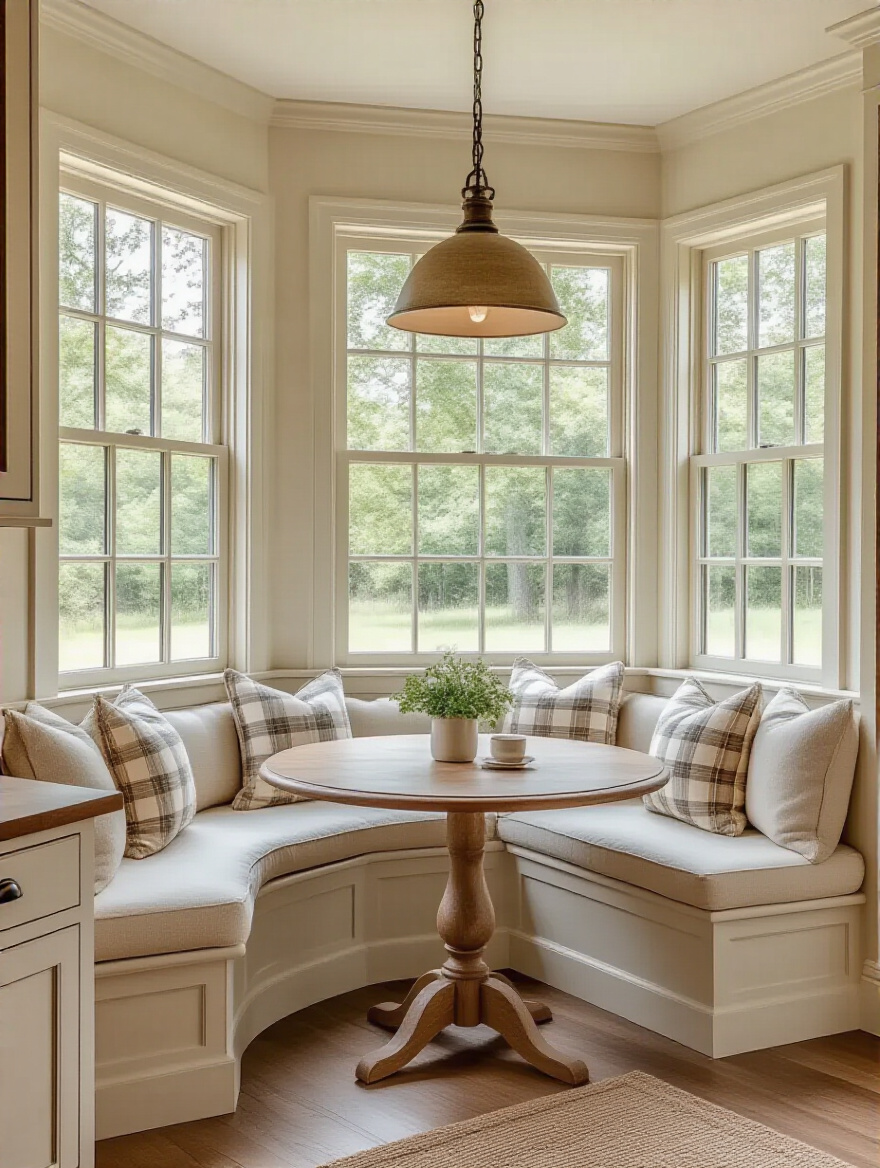
If you don’t have a built-in nook, you can easily create one. The shortcut is a small round bistro table and two comfortable chairs tucked into a corner. I had a client with a tiny galley kitchen who installed a narrow, wall-mounted dropdown table. It took up almost no space when folded, but it was the perfect spot for her laptop during the day and a quiet dinner in the evening. It’s about creating an intentional zone for connection and calm.
Decorating and Personalizing Your Cozy Space (Part 2)
We’re in the final stretch, and this is all about making the space unequivocally yours. These last layers are where your personal story and day-to-day needs come together. It’s about moving beyond design rules and creating a space that genuinely supports and reflects who you are.
17. Incorporate Meaningful Wall Art and Décor That Tells Your Story
Please, I am begging you, do not buy generic “kitchen art.” Your walls are valuable real estate for showcasing your personality. This is what makes a house a home. Frame a handwritten recipe from your grandmother. Hang a beautiful photograph you took on a memorable vacation. Display a collection of your kids’ small ceramic creations on a picture ledge.
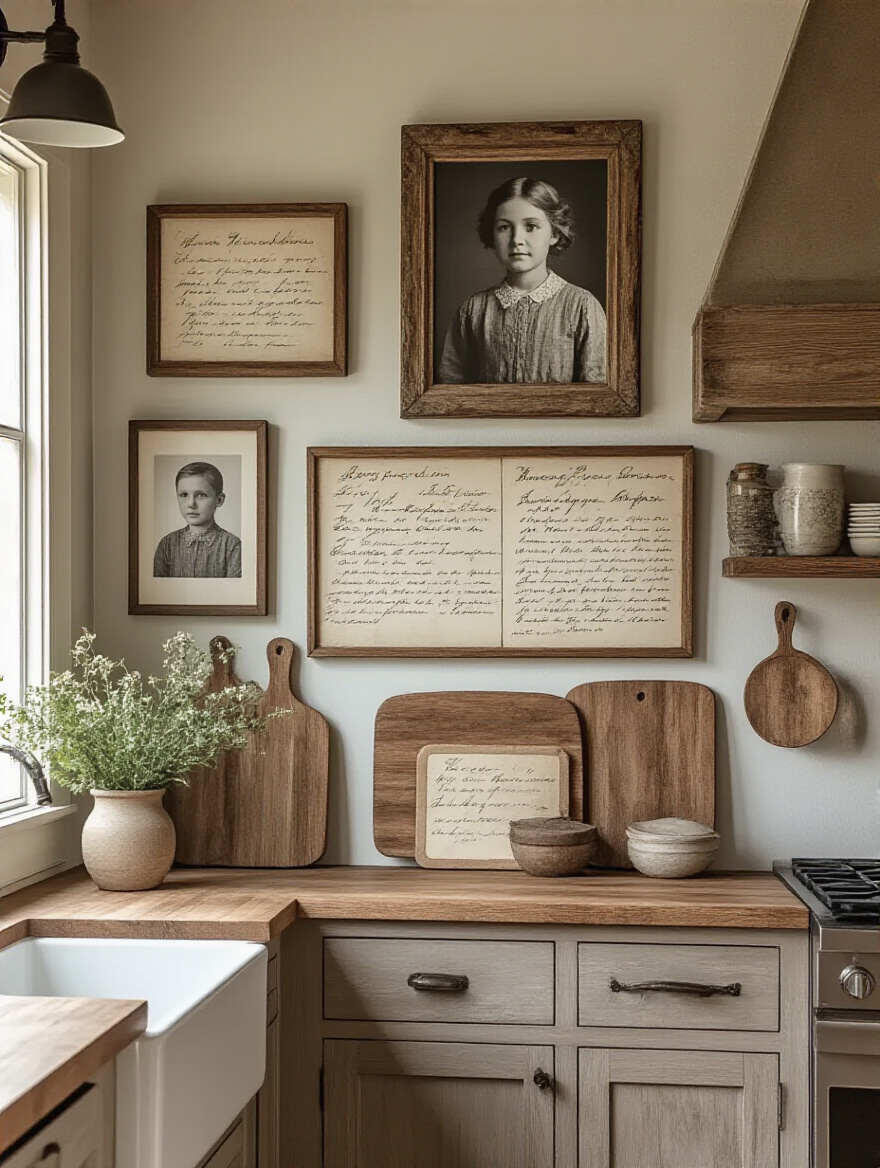
Here’s my “one meaningful thing” rule: for every three decorative items in your kitchen, at least one should have a personal story attached to it. This simple rule prevents your decor from feeling generic. It ensures your space is a reflection of your life, not a catalog. These are the things that will make you smile on a tough day and serve as conversation starters when you have guests over. It transforms your kitchen from a room into a repository of memories.
As you add personal items, you’ll need a smart way to store everything else.
18. Add Practical and Decorative Storage Solutions with Wicker Baskets or Ceramic Crocks
This is the secret to a tidy-looking kitchen that still feels warm and lived-in. Wicker baskets and ceramic crocks are perfect for “corraling” clutter. They provide a designated home for all the little things that would otherwise be strewn across your counters, like mail, keys, extra dish towels, or root vegetables. It’s an organized system that doesn’t feel sterile.
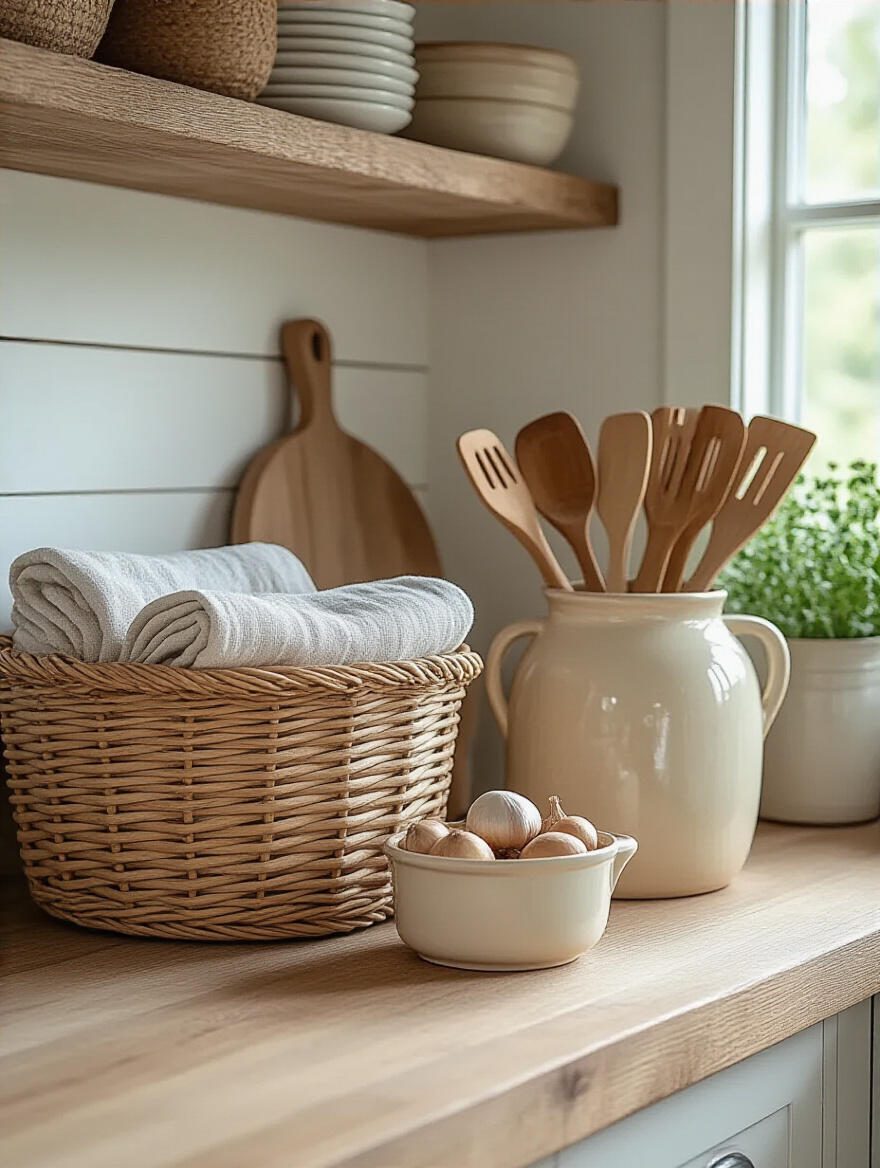
The key is to use them strategically. A large ceramic crock next to the stove is the perfect place for all your wooden spoons and spatulas, keeping them within arm’s reach. A row of wire or wicker baskets in an open pantry can organize snacks or linens. A client of mine used a beautiful lidded wicker basket on her counter as a “bread box,” but it was also where she hid the charging cables for her family’s devices. It was practical, beautiful, and kept the visual clutter to a minimum.
Conclusion
So there you have it. Creating a truly exceptional farmhouse kitchen has less to do with following trends and more to do with building a functional, comfortable, and deeply personal space. It’s not about making a showroom; it’s about engineering your home’s command center to support your busy life. By focusing on a calm foundation, ergonomic fixtures, and meaningful personal touches, you create a room that doesn’t just look warm and welcoming—it actively contributes to your daily productivity and well-being.
This is the space where you will fuel your body, connect with your family, and recharge your mind. It’s arguably the most important room in your home. Don’t just let it happen by accident. Take these ideas, pick one or two that resonate with you, and start building a kitchen that works as hard as you do. Stop pinning and start doing. Your future, less-stressed self will thank you for it.
